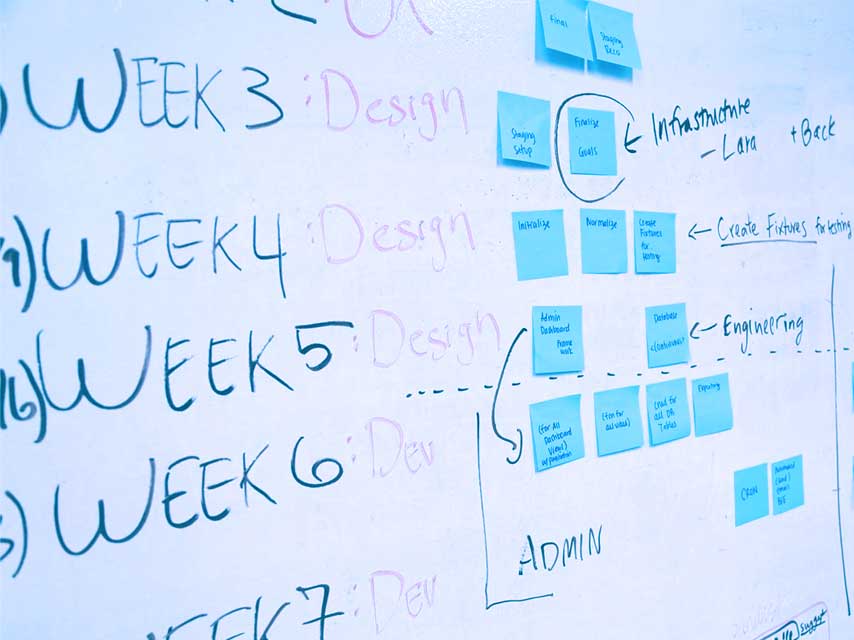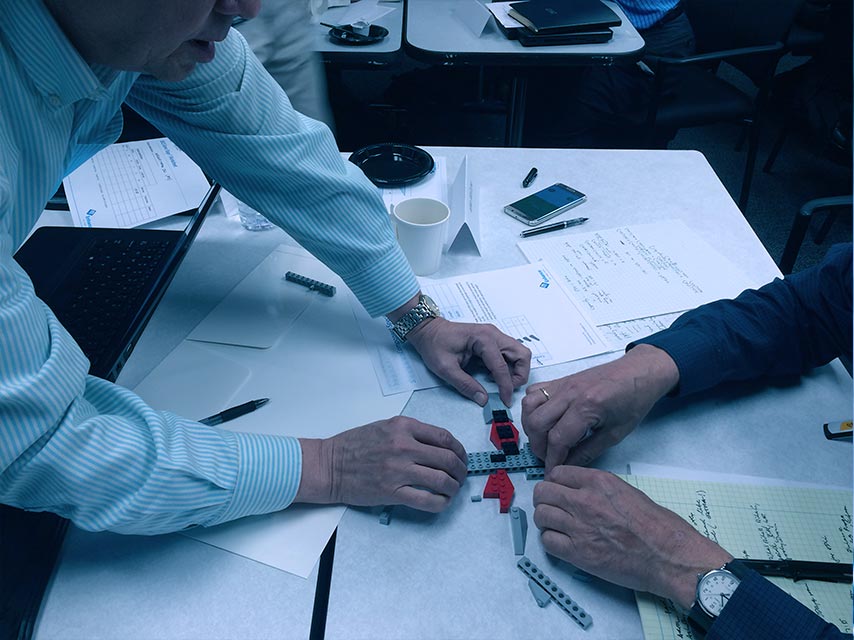Engineering projects start with the best of intentions. The kick-off meeting was exciting and management engagement was great, but at some point, things started to fall apart. The decline might have been gradual or perhaps it came all of a sudden as a result of a pandemic lockdown. Engagement is now absent, milestones have been missed, and things have gone horribly off track. It may have been because other projects did not go to plan so you simply had no choice but to put this one on hold. This might even be one of a number of high potential projects that are today waiting on the shelf.
What happened, and how do you fix things?
Some reports suggest that around 40% of business projects are at risk of failure each year. In engineering innovation, the numbers are much higher. We found, in our work with engineering companies that up to 80% of NPD projects fail. I guess that the failure rate will have gone bananas in 2020. In each of these projects there may well have been a great reason to stop the project, but there is still a significant loss in investment, which eats into business profits. This, I believe could have been avoided.
What causes innovation projects to get so far off track?
In this article, we will explore some of the causes of project failure in engineering innovation, why projects get off track, and what you can do improve your situation.
Poor planning
This is an obvious one. When the client/project situation is unclear, and there is no common understand of the objectives and how to get there, you are bound to run into trouble. In other situations, where objectives are clear, projects may be planned in without the necessary resources in place to actually get the work done. When this becomes department culture then every project will start late, consume resources late, and eat into the plans for future projects. This leads to a whole host of problems, such as lack of exploration in design, rushed decisions that cause rework, and skipped qualification activities that result in product defects.

Goals, objectives, high-level requirements, and major milestones should be SMART and concisely described. And any resource, or planning issues should be investigated and corrected as a priority, so that failed planning and firefighting don’t become the norm. Managing teams and facilitating projects online has been a challenge for many. Not because engineering organisations haven’t done so in the past; most engineers and engineering organisations have used web-based communication for a long time. The real issue has been that on some projects, there has been no face-to-face communication, or very little. One piece of advice that I can offer here, is don’t hold on to old ways of working. If something isn’t working, adapt. If you need to learn how to use a new app, pick it up and have a go. That’s the way forward.
Poor communication
In many projects, communication isn’t great. Meetings, long (complex) documents and unstructured email strings are used as the primary means of communication. All of these methods have proven to be time-consuming, and hinder the kind of communication required for rapid innovation. When you remove an individual from their communication, interpretation is required, and this often leads to misunderstandings. Many experienced engineers and engineering leaders are forced to deviate from processes and opt for a quick phone call or chat in the corridor to get things done. The reason for this, is that direct communication is often the quickest and most effective way to communicate and get tasks done.
Visual templates and proformas are another great way to communicate. They help to communicate what people are thinking without the restrictions of language, and allow everyone involved to quickly understand problems and contribute towards finding solutions. This is especially relevant today, when people are working from home in massive numbers.
Not enough freedom to innovate
Many engineering leaders are fixated on quickly documenting specifications and requirements to minute levels of detail. This may appear great for measurement and up-front planning, but it actually is one of the causes of problems in engineering design and NPD. Assuming that you can specify a project before you have explored and understood the design space is wishful thinking, and in general should be avoided. All projects should document boundaries such as scope, cost, schedule, and objectives, but allow room for engineers to do their magic and produce designs that you will be proud of.
Poor measurement and reporting
Measuring innovation is a science as well as an art. If you get the metrics wrong, you may well end up with results that you do not desire. You could also end up with good financial results in the short term, but compromise your future growth and long-term results. One of the tools which does help to develop a balanced set of metrics is the balanced scorecard. It has its limitations, but it definitely helps to set you off in the right direction.
Another problem which engineering leaders face is that status reports can be inconsistent, untimely, or de-motivating. This is particularly true when the bulk of your projects are running late and your dashboards are primarily red or amber in colour. Dashboards and project status reports needs to evolve over time, and project managers should adapt their approaches to changing times and circumstances.
When projects are flagged because of their deviation from plans, then corrective measures should be used, but not without understanding the root causes. One of the longest standing complaints within the engineering community is that organisations fail to learn from mistakes. Any mistake or failure can be considered good for an organisation, because it helps them to not make that mistake in the future. But this will only happen if taking corrective action and feeding lessons forward is built into your organisational culture. This topic will be addressed in more detail in a future article.
Disunity
The last trigger for innovation project management troubles that I will mention in this article, is a disconnected team. Personality conflicts, trust issues, contempt and apathy can lead to project failure. What’s worse is that this kind of a project is a nightmare to be part of, both for the people in conflict, and also for the other people involved. One of the causes for disunity which we have noticed is the difference in views between older, more experienced project personnel, and younger generations. We can all bring different sets of values and ideas to the table. Great innovation is often a combination of them. It is important for engineering leaders to really demonstrate their leadership here, understand what is going on, and nip problems in the bud before they infect the rest of the project or a greater proportion of the organisation. If you’re involved in a project where the team is disunited, and problems have become the norm, you need to be more cautious. It is easy to speculate, and have opinions, but for the most part, it doesn’t help the situation, especially if you’re trying to establish unity over Zoom or Microsoft Teams. Take the time to understand what peoples’ views are, and together, determine a way forward that brings everyone together.

In this article, we have described a number of problems that cause innovation projects to get off track. We’ve also provided advice to help you get your innovation projects back on track in the near future. Before moving on to the rest of your day, take a moment to note down some of the things that you can do differently so that you can achieve fantastic innovation results this year.
Do you want to experience what you and your team may be doing wrong in NPD? Join one of our coaches for a free online Lego game session and see if you can deliver a good NPD solution. To find out more, click the link below.








